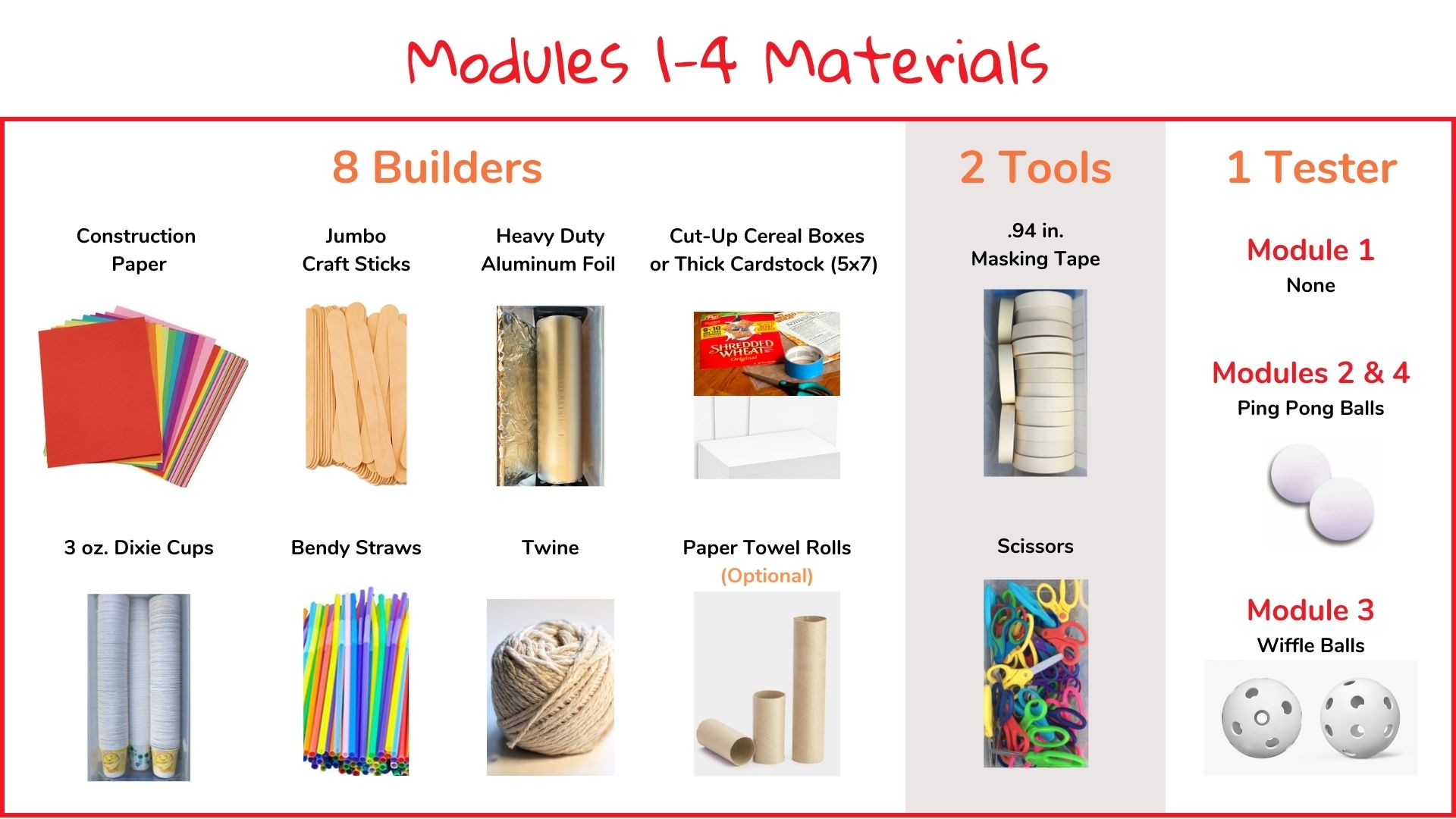STEM Challenge: Bridging Sir Ion’s Wrath

Context and Challenge
Superhero Metropolis faces a crisis after Sir Ion, a super villain with the ability to control metal, demolished nearly all the city’s bridges in a fit of rage sparked by an embarrassing incident involving chocolate pudding. His actions were a response to public laughter, leading to a sudden and destructive use of his powers.
Build strong bridges without any metal, circumventing Sir Ion’s ability to manipulate them.
Constraints and Success Criteria
- The bridges cannot contain any metal components, to prevent Sir Ion from being able to control them.
Materials

You do not need any testers for this challenge.
Logistics
- Prepare Materials: Ensure you have all the necessary materials ready beforehand and organize them so that they are easily accessible to students. Students should use no more than five of any one material per creation! For example, a student can use five straws and five pieces of paper, but not ten straws. If you provide aluminum foil, no more than one arm’s length piece for each student!
- Set Up Testing Area: Create a designated area where students can test their bio bubbles.
- Provide Guidelines and Constraints: Reiterate the challenge and the constraints to students as needed. Emphasize the importance of following safety guidelines and considering the constraints, while designing their bio bubbles. Building time is 45 minutes!
- Model the Design Process: Before students begin, demonstrate the design process by going through the steps yourself. Discuss how to brainstorm ideas, create prototypes, test them, and make iterations based on the results, as needed.
- Encourage Collaboration: Foster a collaborative environment where students can work together in pairs. Encourage them to share ideas, help each other troubleshoot challenges, and provide constructive feedback throughout the process. But no groups of three!
- Support Adaptation: Encourage students to embrace the mindset of adaptation and problem-solving. Help them see that setbacks and failures are opportunities to learn and make improvements. Guide them in identifying areas for adaptation and brainstorming alternative solutions.
- Facilitate Reflection: Set aside time for students to reflect on their design process and decision-making. Ask questions that prompt them to think critically about their choices, challenges they faced, and what they learned from the experience. This reflection can be done individually, in pairs, or as a whole-class discussion.
- Celebrate and Showcase: Once students have completed the challenge, celebrate their efforts and showcase their work. Provide opportunities for students to share their experiences, explain their design choices, and reflect on the overall learning journey.
CASEL Discussion Questions
Five questions aligned to Self-Awareness and Self-Management — our focus CASEL competencies for Module 1 — for teachers to foster an engaging discussion and social-emotional learning



